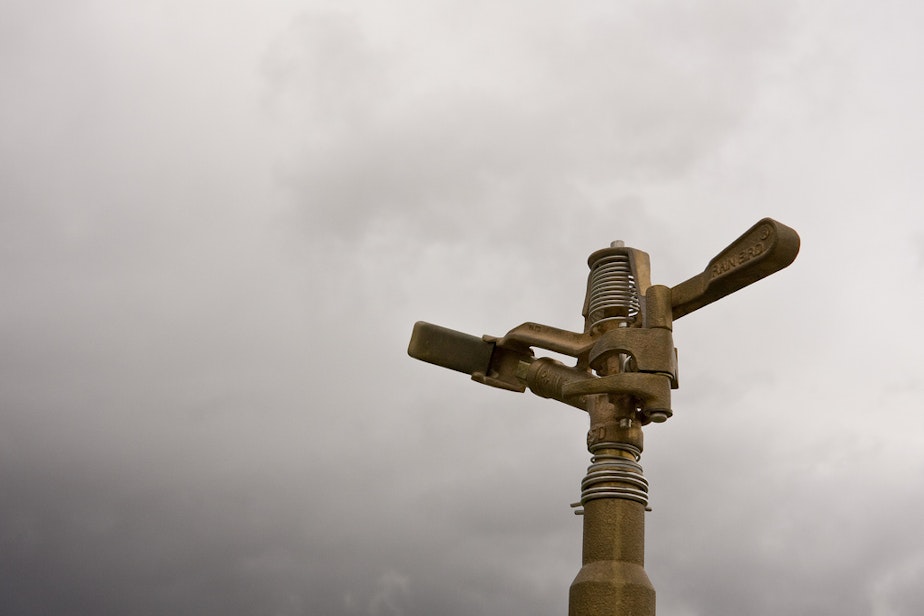Drought Worsens: Seattle Area Asked To Cut Water Use

Residents of Seattle, Tacoma and Everett are being asked to cut back on their use of water by 10 percent.
That’s because the summer’s historic high temperatures and lack of precipitation have worsened the region’s water supply outlook. In addition, water supply managers are worried about forecasts for drier than normal conditions this fall.
The city of Everett’s water supply is currently at 64 percent of normal. Its two reservoirs hold about seven months’ worth of supply.
According to Marla Carter of Everett’s Public Works Department, that would be enough to get through the dry season in a typical year.
But this year has been far from typical. Last week's U.S. Drought Report showed 100 percent of Washington state in drought conditions, with nearly a third in extreme drought.
Sponsored
“We’re looking out and saying there is no guarantee that we are going to get the fall rains in October like we typically do, so this is to help give us a cushion in the reservoirs in case we have to spread that out longer,” Carter said.
Water managers from the three cities are suggesting that residents begin by reducing their water use outside.
In the summer, water use typically doubles because people use a lot of water on their lawns and plants.
The easiest change to make is to stop watering your lawn, according to Kelly O’Rourke, conservation planner for Seattle Public Utilities.
“If they haven’t already let their lawn go dormant, doing that will get them 10 percent easily. If they are watering (plants) more than twice a week, reducing that will easily get them a 10 percent reduction,” she said.
Sponsored
Other ideas: wash only full loads of laundry or dishes, take shorter showers and fix leaky faucets and pipes.
Last month, water managers in the three cities enacted phase 1 of a drought response plan that asked residents to simply monitor their water use. Phase 2 sets out specific goals for voluntary reduction.
Water managers say they will be closely watching water supplies to see whether they need to go from voluntary to mandatory water restrictions in the future. The last the time Seattle imposed mandatory water restrictions was in 1992.
The three cities will be reporting how much progress the region is making in reaching the 10 percent reduction goal. You can track that at the Saving Water Partnership.
Photo credit: "Unnecessary 9819," by Amanda Graham on Flickr (CC BY NC ND 2.0)

